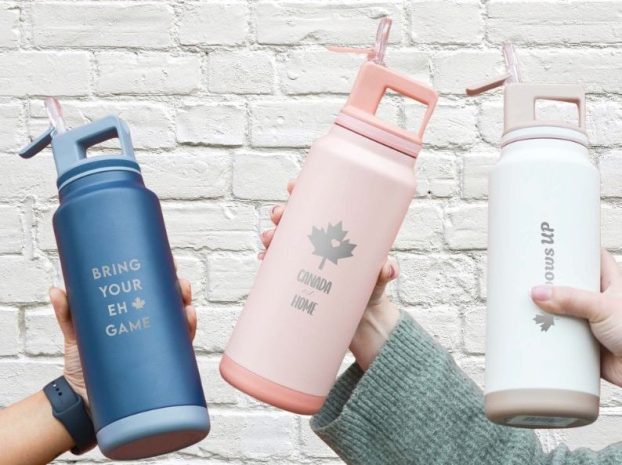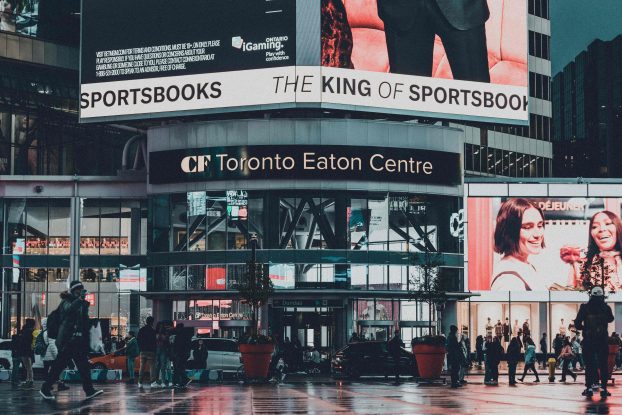 “In Canada, over two billion single-use plastic water bottles are sold each year. Each of those bottles takes 450 years to decompose,” says Matt Kohler, vice-president of marketing for Brita Canada. “I think people believe that because it’s made from recyclable material that those single-use water bottles are all going to get recycled. The reality is that much of it does not. It ends up landfills or, even worse, in our streams, rivers and waterways. Brita wants to raise awareness of that.”
“In Canada, over two billion single-use plastic water bottles are sold each year. Each of those bottles takes 450 years to decompose,” says Matt Kohler, vice-president of marketing for Brita Canada. “I think people believe that because it’s made from recyclable material that those single-use water bottles are all going to get recycled. The reality is that much of it does not. It ends up landfills or, even worse, in our streams, rivers and waterways. Brita wants to raise awareness of that.”
To do that, Brita began Earth Month by launching its new Premium Filtering Water Bottle and unveiling a stunning art installation called “Niagara Now” for a one-week run at Toronto’s Union Station. The 12-foot-high horseshoe-shaped waterfall was created using 900 cascading plastic water bottles painted in shades of blue and sea green.
Asher Jay, world-renowned creative conservationist and National Geographic Explorer, created the one-of-a-kind art piece. Her mandate from Brita Canada was to illustrate the environmental impact of single use water bottles on Canadian waterways. “I chose to do it as a waterfall because if one person changes their behaviour it can result in multiple people changing their behaviours. It’s this trickle-down impact. I expressed this against Niagara Falls because it is the most iconic Canadian waterway. We take great pride in it, yet we end up throwing our waste into it. Over 22 million tons of plastic end up in the Great Lakes in a given year.”
The 900 hundred bottles in “Niagara Now” represent the approximate number of water bottles consumed and cast aside every five minutes just in Toronto. It is also the number of bottles that one single Brita Longlast Filter could eliminate. On either side of the towering art installation are two display cases, each holding a single Brita Longlast Filter, a juxtaposition that brings home the message that one simple decision can make a big impact on the environment.

In addition to depicting the sheer number of bottles discarded every five minutes in Toronto, 621 bottles are painted to showcase that 69% of Canadian households that prefer tap or filtered water to bottled water. Another 108 bottles are partially painted to represent the 12% of households that drink tap, filtered and bottled water and 171 unpainted bottles reflect the percentage of households that drink only bottled water.
“It’s a small fraction of society actually actively consuming bottled water yet they’re the ones leaving the numbers we’re talking about,” says Jay. “The majority of Canadians are conscientious about protecting their waterways and drink tap or filtered water but small numbers consuming it still result in the millions of bottles that end up in the landfill.”
Scattered on the floor around the waterfall are messages citing some of the astounding statistics about the pollution of Canada’s waterways by single-use plastic water bottles.
“One statistic that really grabs attention is that by 2050, we’re going to have more plastic in the ocean than we have fish. That’s an astounding statistic,” says Kohler. “When consumers find out that each plastic bottle takes 450 years to decompose, they really start to take notice.”
Although “Niagara Now” will be in Union Station this week only, Kohler says Brita is looking at ways to be able to take it on the road. This new Brita campaign also includes “The Beauty Beneath”, a 60-second national TV spot slated to run throughout the year, as well as digital support through YouTube, Facebook and Instagram. Dentsu Bos handled campaign creative with media placement by OMD and PR from Devon Consulting.
Kohler adds, “Every brand needs a purpose. It’s not enough just to be a series of features and benefits. You need to stand for something. Consumers expect that. Companies need to be doing it more. Brita’s brand purpose is to bring clean, great tasting water to consumers. We feel that you shouldn’t have to destroy the planet to do that. When you look at what’s going on right now, people are drinking more water – and that’s a good thing.”




















